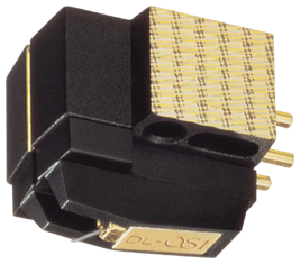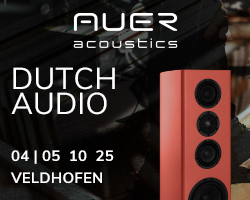Part 2 in the ongoing cartridge shootouts -this time Denon MCs are put through their paces
Introduction
This is Part 2 of an ongoing series of cartridge comparisons, this review focusses on a wide range of Denon low output moving coil cartridges that have passed through my system over the years.
Denon is a long-established Japanese electronics manufacturer who have been involved in moving coil cartridges since the 1930s. 1963 saw the introduction of the DL-103 cartridge – and that is still in production! Is that the longest running audio item ever? – it could well be. Amazingly, it still sounds good against more ‘modern’ competition, and some folks (me included) rate it very highly in its price band. Denon themselves have made up-market versions of the 103 and other companies have also introduced variants in body and stylus/cantilever configuration.
This mini-survey of Denon cartridges covers the models 103, TAF-103, Zu-103, 304 and S1. I’ve also auditioned the 103R in other systems. These vary in price from around £150 for the standard DL-103 to circa £750 for the flagship DL-S1.
Turntable choices
As explained in Part 1, these days I favour moderately priced Japanese direct drive turntables – these should work well with Denon cartridges, I suspect!
So, the cartridges being looked at here have all spent there time with me riding in either a Denon DP-62L, a Technics SL-1210 or a Pioneer PL-71.
Sound Quality!
Curiously, the selection of Denon cartridges auditioned fall into two very distinctive sounding groupings … meaty-&-solid, and delicate-&-light.
103 & variants ….
Solid, bouncy, punchy, enthusiastic. A bundle of musical fun. I like them a lot. Really a lot! … but you have to treat them right to get the best out of them.
The standard 103 comes housed in a lightweight and quite flimsy plastic body and has a – horror! – spherical stylus tip. After-market companies have addressed some or all of these “issues”. Although at the price, I personally don’t think that you can fault the 103. It tracks decently at 2 to 2.5g (despite its unsophisticated stylus profile) and delivers musical enjoyment in spades. I could give a long list of more expensive cartridges that I have owned that can’t keep  up with the 103’s musical enthusiasm.
up with the 103’s musical enthusiasm. 
Compared to other makes (Dynavector & Ortofon, to name but two) the 103 family can sound rather robust and lacking in sophistication, and its bass can lack a little control and definition. You do need to experiment with loading, but even so these characteristics remain to a degree. It doesn’t suit lightweight arms at all, the 103 puts out a lot of energy into the supporting structure and the sound just fails to convince when the 103 is not happy … which I suspect goes a long way to explaining some of the negative vibes that you hear and read about it. Make it happy and it will reward you. It makes many competitors sound fragile and over-delicate and just plain bland.
As previously implied, the lightweight plastic body is a limitation of the standard 103 due to the amount of energy it releases back into its mechanical surroundings. Several companies have addressed this issue by stripping off the plastic housing and mounting the guts of the 103 into a solid aluminium body.
My first experience of this approach was with the now sadly defunct The Analogue Factory (TAF) – a small company based in Gloucestershire, UK. Here’s the beast – a beautifully engineered shell in a very attractive and eye-catching metallic blue! Easy to mount with tapped screw holes and a nicely square profile for quick and accurate alignment in a headshell.
 It’s immediately obvious that the sound is tighter and more controlled than the standard 103. Bass is tauter and has even more punch and drive, and the treble sounds more extended and refined. Dynamics overall are cleaner and wider. This was a significant upgrade for about a 50% increase in price, the TAF103 cost me around £180 a couple of years ago.
It’s immediately obvious that the sound is tighter and more controlled than the standard 103. Bass is tauter and has even more punch and drive, and the treble sounds more extended and refined. Dynamics overall are cleaner and wider. This was a significant upgrade for about a 50% increase in price, the TAF103 cost me around £180 a couple of years ago.
The Zu-103 does the same sort of thing, even more so in fact, but in a silver aluminium housing. Zu is a medium sized American company who also make rather interesting speakers of original and rather controversial design and sonic presentation. The cartridge costs upwards of $400 in the USofA, with tighter tolerance options costing more.
 As might be expected the TAF and Zu 103 cartridges weigh in far heavier than the standard cartridge, and your tonearm counterweight may well require a little assistance in providing the necessary counter-balancing force.
As might be expected the TAF and Zu 103 cartridges weigh in far heavier than the standard cartridge, and your tonearm counterweight may well require a little assistance in providing the necessary counter-balancing force.
My current cartridge of choice is a Zu-103 which has been retipped with an elliptical profile. … not that the spherical profile is anything to be wary of, it works just fine.
DL-304 & DL-S1
The 304 is a very pretty cartridge in a blingy kind of way, with its patterned gold plastic housing. Current pricing is around £340. 
I have to be honest from the outset here, I didn’t get on with either of these at all!
Very open sounding, delicate, brimful of fine detail, and very very fast in the mids and treble, but never harsh or strident. Sounds good so far! … but they also have a notably lightweight bass-end that makes them seem to be severely lacking in dynamic punch. The whole presentation seems unbalanced, in fact. It sounded to me that there was no foundation to the music – it just kind of breezed along, light & boppy. Which some folks enjoy, I guess, so that’s fine. Loading options other than the quite wide range that I tried might give different results, but to be honest, I doubt it can change by that much. I think that is just the nature of these 2 cartridges. The sound is just not for me. I tend to go for full-range speakers, maybe a system with small speakers and/or a warmer balance would suit these cartridges better.
The DL-S1 (which is the top of the range Denon), in particular, is amazingly detailed and refined. Soundstaging and imaging are little short of jaw-dropping. A real “Wow factor” when you first listen. But where da bass go? Once again, this tonal anomaly resulted in a lack of dynamic impact from the music. Wonderful with violin and harpsichord,say. Or perhaps a single folk singer with acoustic guitar. But feed it a large scale symphonic piece, or a rock music or technodance classic, and I found it severely lacking in musical realism and enjoyment to the point of irritation!
 Hmm, I just couldn’t get my head round the balance of virtues and vices on offer here. I think you need to look very carefully at overall system synergy to make these work properly. And also to be more appreciative than I of the type of sonic presentation on offer. To be fair, I know of some folks who have done just that and very much enjoy their DL-304 cartridges.
Hmm, I just couldn’t get my head round the balance of virtues and vices on offer here. I think you need to look very carefully at overall system synergy to make these work properly. And also to be more appreciative than I of the type of sonic presentation on offer. To be fair, I know of some folks who have done just that and very much enjoy their DL-304 cartridges.
More reviews to follow on Ortofon, Decca cartridges and others …. followed by an overall summary.
Want to read more hifi reviews?


































































































































































































I had a DL 304 coupled with Gyro Dec and SME IV and found it exactly as you described, kind of like someone put the music through a tea strainer.
Good summary. I have several Denon carts including a Uwe wood bodied 103r and the DL-S1. Your description of the DL-S1 is right on the money, paticularly in the choice of music it can do justice to. It is my choice for violin sonatas and string quartets, also folk music including guitars, vocals, etc. I’ve found also that it can perk up some rock recordings that are less than exemplary; early Tull, The Who, etc that sound muggy and undynamic (Stand Up and Who’s Next come immediately to mind).
I do make one exception to your statement about the lightness of bass. Not that I disagree with it, but when you take the meaty, unrefined aspect of the 103 and filter it carefully to damp out the resonances that are responsible for the unrefined aspects, you wind up with the bass of the DL-S1. It is still big, but very well defined and tightly controlled. To someone with a highly damped playback system this might not be the best match, but on it’s own it is clearly better than the 103.
I disagree with your findings on the DL-S1. Perhaps your choice of tables leaves a lot to be desired. I’ve used it on my Goldmund Studio, with a Dynavector 505 arm, and S&B TX103 MC transformers into MF tube phono stage, and bass is simply amazing. Clear, deep, detailed, fast, and just plain great. Combined with a very sophisticated and detailed sound, it is my current go-to cartridge. My only complaint about it is that it is a bit too delicate sometimes. It is a poor man’s high end cartridge. A cartridge like this deserves somewhat more advanced equipment to show it’s true potential.